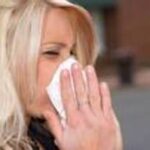Millions of people suffer from grass pollen allergies, commonly known as “hay fever.” Grass pollen allergy sufferers need to understand the symptoms of their affliction, the nature of allergies and pollen, and how to control the allergy and their exposure to pollen.
Allergies
An allergy is the reaction of a person’s immune system to a foreign body, such as grass pollen, that triggers a response by the immune system. Foreign bodies that trigger allergic reactions are called “allergens.
Grass pollen is one of the most common allergens effecting people. Pollen is generated by grass and other plants in order to reproduce. Pollen consists of microscopic-sized round- or oval-shaped grains containing the plant’s seed.
“Hayfever” Season
Different plants have different but specific pollinating periods that occur generally at the same time of the year. The pollination period of the plant will be effected by the geographic region it is located in, as that will effect the period of sunlight it receives. The pollination period also is effected by weather conditions. Weather conditions can boost or cut the amount of pollen that is produced by a specific plant in one year.
Generally, grass releases its pollen in the period stretching from late spring through the early summer. In the Southern region of the United States, the “hay fever” season can start as early as March and continue through October. In the North, the havy fever season typically begins in May and ends in August.
Most Common Grass Pollen Allergens
The pollen of only a handful of the more than 1,200 species of grass cause allergic reactions in people. The most common grass pollen allergens are Bermuda grass, Johnson grass, Kentucky bluegrass, orchard grass, redtop grass, sweet vernal grass and timothy grass.
Symptoms of Grass Pollen Allergies
The most common symptoms of grass pollen allergies are a running or congested nose, sneezing, wheezing, and itchy and watery eyes. Unlike someone suffering from a cold, a patient reacts to the presence of the allergen quickly, and the symptoms last for as long as the patient is exposed to the allergen.
Care and Treatment
An allergic reaction to grass pollen is indicative of a the body’s release of an excessive amount of histamine, a biogenic amine that is part of the body’s local immune response to the presence of foreign pathogens. Pathogen, such as allergens, cause the body to produce histamine to boost the action of white blood cells and other proteins that attack the allergen.
The most popular treatment for grass pollen allergies is an anti-histamine. Antihistamines, which also are known as histamine antagonist, inhibit the action and release of histamines.
First- and second-generation antihistamines, such as Benadryl (diphenhydramine hydrochloride), Claritin (loratadine), or Zyrtec (cetirizine hydrochloride) bind to the H1 histamine receptor. By blocking the receptor, the production of other chemicals generated by an allergic response is inhibited, and there is no increase of theblood supply to the area. This gives relief to an grass pollen allergy sufferer.
Diphenhydramine hydrochloride, which was first discovered in 1943 and approved by the Food & Drug Administration in 1946, has a sedative effect and is often used as a component of over-the-counter sleeping aids. The second-generation antihistamines did not cross the blood-brain barrier as easily as did Benadryl, and had less of a sedative effect.
Third-generation antihistamines, like Xzal, (levocetirizine dihydrochloride, which is developed from cetirizine hydrochloride), also blocks the histamine from binding to its receptors. While the drug makers claim that third-generation antihistamines are more effective and have fewer side effects,Wikipedia reports that the claim “is not clearly supported by the available clinical literature.
Controlling Exposure to Pollen
The control of grass pollen allergies is tricky, in that pollen is a seasonal phenomenon and varies by regions. The grass pollen in one region of the United States can be totally different from that in another region, and a person that is allergic to one region’s pollen may not be allergic to that of another region. In addition, the pollen and its efficacy as an allergen is affected by temperature, the time of day, and rain.
The expansion of human populations and landscaping also has had an effect on glass pollen allergies. Thus, dry, desert areas once renowned as sanctuaries for grass pollen allergy suffers, such as Arizona, are no longer as effective as the denizens have added lawns and swimming pools, which has added grass pollen allergens to the air.
Hayfever allergy sufferers can help reduce their exposure to allergens by being aware of the daily pollen count, and limiting their out-doors activities accordingly.
Pollen Counts
Pollen counts are offered as an addendum to local weather reports in many regions. A pollen count is a measure of the amount of pollen is in the air, indicating the concentration of all pollens and specific types such as grass or ragweed pollen borne in the air in a specific area at a specific time.
Pollen counts are effected by weather conditions. Typically, they are higher on warm, dry mornings featuring breezy weather. Pollen counts decline during cold, wet weather conditions.
Allergy sufferers can use the pollen count as guide indicating when it is best to remain indoors if they wish to avoid contact with pollen.
Sources
National Institute of Environmental Health Sciences: Pollen
The Health Professor: Allergies
eMed.tv Pollen Allergy



